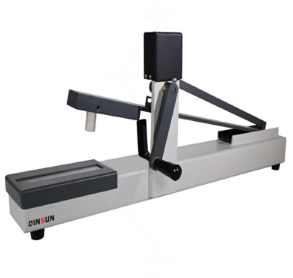- Qinsun Instruments Co., Ltd.
- Tell:+86-21-6780 0179
- Phone:+86-17740808215
- Address:No. 2578 Minhang District Gu Dai Road, Shanghai
- Contact:Mr. Li
- QQ:846490659
Manual friction color fastness tester

Compliant with standards:
BS 1006 D02; ISO 105 D02 X12; AATCC 8 165; GB/T 3920; NEXT TM6 M&S C8 C8A;
Applicable scope:
This instrument is suitable for evaluating color fastness friction tests in industries such as textiles, knitwear, leather, electrochemical metal plates, printing, etc.
Product details:
The manual friction color fastness tester is the most commonly used model in the textile industry to test the dry and wet friction color fastness of fabrics. Under certain conditions, the sample is rubbed against a standard small white cloth, and the degree of color transfer to the small white cloth is evaluated using a staining gray card. Equipped with a crank arm, counter, stainless steel sample holder, and a testing head with a diameter of 16mm or 25mm (capable of providing 9N± 10% vertical pressure).
Accessories and consumables:
1. Friction cloth sample holder
2. Standard friction sandpaper
3. Friction small white cloth (AATCC/ISO standard)
4. Friction Small White Cloth (SDC)
5. Calibrate fabric
6. Grey card (stained) - ISO/BS standard
7. Grey Card (Stained) - AATCC Standard
Measurement steps:
1. Sample preparation:
1.1 The sample and standard friction white cloth shall be conditioned in a constant temperature and humidity environment.
When the sample has multiple colors, all colors should be rubbed against.
1.3 If the area of each color is large enough, samples must be taken separately.
1.4 Cut the sample and perform dry and wet friction separately, ensuring that all colors are rubbed.
If the front and back of the sample are made of different materials and colors, both sides must undergo a color fastness test for friction.
1.6 The dry and wet rubbing fastness should not be repeated on the same part of the sample.





